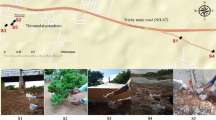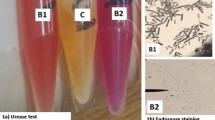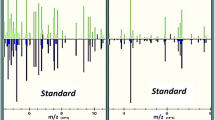Abstract
A novel high-throughput strategy was developed to determine the calcium precipitation activity (CPA) of mineralization bacteria used for self-healing of concrete cracks. A bacterial strain designated as H4 with the highest CPA of 94.8 % was screened and identified as a Bacillus species based on 16S rDNA sequence and phylogenetic tree analysis. Furthermore, the effects of certain influential factors on the microbial calcium precipitation process of H4 were evaluated. The results showed that lactate and nitrate are the best carbon and nitrogen sources, with optimal concentrations of approximately 25 and 18 mM, respectively. The H4 strain is able to maintain a high CPA in the pH range of 9.5–11.0, and a suitable initial spore concentration is 4.0 × 107 spores/ml. Moreover, an ambient Ca2+ concentration greater than 60 mM resulted in a serious adverse impact not only on the CPA but also on the growth of H4, suggesting that the maintenance of the Ca2+ concentration at a low level is necessary for microbial self-healing of concrete cracks.







Similar content being viewed by others
References
Alghamdi HS, Bosco R, Both SK, Iafisco M, Leeuwenburgh SC, Jansen JA, van den Beucken JJ (2014) Synergistic effects of bisphosphonate and calcium phosphate nanoparticles on peri-implant bone responses in osteoporotic rats. Biomater 35:5482–5490
Bang SS, Lippert JJ, Yerra U, Mulukutla S, Ramakrishnan V (2010) Microbial calcite, a bio-based smart nanomaterial in concrete remediation. Int J Smart Nano Mater 1:28–39
Bentzon-Tilia M, Farnelid H, Jürgens K, Riemann L (2014) Cultivation and isolation of N2-fixing bacteria from suboxic waters in the Baltic Sea. FEMS Microbiol Ecol 88:358–371
Chaudhry V, Nautiyal CS (2011) A high throughput method and culture medium for rapid screening of phosphate accumulating microorganisms. Bioresour Technol 102:8057–8062
De Muynck W, De Belie N, Verstraete W (2010) Microbial carbonate precipitation in construction materials: a review. Ecol Eng 36:118–136
Dong BQ, Wang Y, Fang G, Han NX, Xing F, Lu Y (2015) Smart releasing behavior of a chemical self-healing microcapsule in the stimulated concrete pore solution. Cem Concr Comp 56:46–50
Douglas S, Beveridge TJ (1998) Mineral formation by bacteria in natural microbial communities. FEMS Microbiol Ecol 26:79–88
Ghosh S, Korza G, Maciejewski M, Setlow P (2015) Analysis of metabolism in dormant spores of Bacillus species by 31P nuclear magnetic resonance analysis of low-molecular-weight compounds. J Bacteriol 197:992–1001
Hou W, Lian B, Zhang X (2011) CO2 mineralization induced by fungal nitrate assimilation. Bioresour Technol 102:1562–1566
Jonkers HM, Thijssen A, Muyzer G, Copuroglu O, Schlangen E (2010) Application of bacteria as self-healing agent for the development of sustainable concrete. Ecol Eng 36:230–235
Karagöl F, Demirboğa R, Kaygusuz MA, Yadollahi MM, Polat R (2013) The influence of calcium nitrate as antifreeze admixture on the compressive strength of concrete exposed to low temperatures. Cold Reg Sci Technol 89:30–35
Kim OS, Cho YJ, Lee K, Yoon SH, Kim M, Na H, Chun J (2012) Introducing EzTaxon-e: a prokaryotic 16S rRNA gene sequence database with phylotypes that represent uncultured species. Int J Syst Evol Microbial 62:716–721
Lee BD, Apel WA, Walton MR (2006) Calcium carbonate formation by Synechococcus sp. strain PCC 8806 and Synechococcus sp. strain PCC 8807. Bioresour Technol 97:2427–2434
Li P, Qu W (2015) Bacteria for concrete surface treatment. In: Torgal FP, Labrincha JA, Diamanti MV, Yu CP, Lee HK (eds) Biotechnologies and biomimetics for civil engineering, 1st edn. Springer International Publishing, Switzerland, pp 325–358
Neelamegam P, Jamaludeen A, Rajendran A (2010) Analysis of calcium in milk using an embedded system. Sens & Instrumen Food Qual 4:119–125
Nejadnik MR, Yang X, Bongio M, Alghamdi HS, Van den Beucken JJ, Huysmans MC, Leeuwenburgh SC (2014) Self-healing hybrid nanocomposites consisting of bisphosphonated hyaluronan and calcium phosphate nanoparticles. Biomater 35:6918–6929
Okwadha G, Li J (2010) Optimum conditions for microbial carbonate precipitation. Chemosphere 81:1143–1148
Pfennig N (1974) Rhodopseudomonas globiformis, sp. n., a new species of the Rhodospirillaceae. Arch Microbiol 100:197–206
Qian CX, Wang JY, Wang RX (2009) Corrosion protection of cement-based building materials by surface deposition of CaCO3 by Bacillus pasteurii. Mater Sci Eng: C 29:1273–1280
Qian CX, Wang RX, Cheng L, Wang JY (2010) Theory of microbial carbonate precipitation and its application in restoration of cement-based materials defects. Chin J Chem 28:847–857
Qian CX, Luo M, Pan QF, Li RY (2013) Mechanism of microbially induced calcite precipitation in self-healing concrete. J Chin Ceram Soc 41:620–626
Qiu J, Tong QS, Yang EH (2014) Surface treatment of recycled concrete aggregates through microbial carbonate precipitation. Constr Build Mater 57:144–150
Ramirez-Peralta A, Stewart KAV, Thomas SK, Setlow B, Chen Z, Li YQ, Setlow P (2012) Effects of the SpoVT regulatory protein on the germination and germination protein levels of spores of Bacillus subtilis. J Bacteriol 194:3417–3425
Sierra-Beltran MG, Jonkers HM, Schlangen E (2014) Characterization of sustainable bio-based mortar for concrete repair. Constr Build Mater 67:344–352
Tamura K, Dudley J, Nei M, Kumar S (2007) MEGA4: molecular evolutionary genetics analysis (MEGA) software version 4.0. Mol Boil Evol 24:1596–1599
Van Tittelboom K, De Belie N, De Muynck W, Verstraete W (2010) Use of bacteria to repair cracks in concrete. Cem Concr Res 40:157–166
Wang JY, De Belie N, Verstraete W (2012) Diatomaceous earth as a protective vehicle for bacteria applied for self-healing concrete. J Ind Microbial Biotechnol 39:567–577
Wang JY, Snoeck D, Van Vlierberghe S, Verstraete W, De Belie N (2014a) Application of hydrogel encapsulated carbonate precipitating bacteria for approaching a realistic self-healing in concrete. Constr Build Mater 68:110–119
Wang JY, Soens H, Verstraete W, De Belie N (2014b) Self-healing concrete by use of microencapsulated bacterial spores. Cem Concr Res 56:139–152
Wang JY, Dewanckele J, Cnudde V, Van Vlierberghe S, Verstraete W, De Belie N (2014c) X-ray computed tomography proof of bacterial-based self-healing in concrete. Cem Concr Comp 53:289–304
Wiktor V, Jonkers HM (2011) Quantification of crack-healing in novel bacteria-basedself-healing concrete. Cem Concr Comp 33:763–770
Xu J, Yao W (2014) Multiscale mechanical quantification of self-healing concrete incorporating non-ureolytic bacteria-based healing agent. Cem Concr Res 64:1–10
Xu J, Yao W, Jiang Z (2013) Non-ureolytic bacterial carbonate precipitation as a surface treatment strategy on cementitious materials. J Mater Civil Eng 26(5):983–991
Ziegler A (2008) The cationic composition and pH in the moulting fluid of Porcellio scaber (Crustacea, Isopoda) during calcium carbonate deposit formation and resorption. J Comp Physiol B 178:67–76
Acknowledgments
The authors acknowledge the financial support provided by National Natural Science Foundation of China (No. 51120185002, No. 51578339) and American Journal Experts for English improvement.
Author information
Authors and Affiliations
Corresponding authors
Ethics declarations
All of the authors of this article (J.L. Zhang, R.S. Wu, Y.M. Li, J.Y. Zhong, X. Deng, B. Liu, N.X. Han and F. Xing) declare that they have no conflicts of interest. This article does not contain any studies with human participants or animals performed by any of the authors.
Rights and permissions
About this article
Cite this article
Zhang, J.L., Wu, R.S., Li, Y.M. et al. Screening of bacteria for self-healing of concrete cracks and optimization of the microbial calcium precipitation process. Appl Microbiol Biotechnol 100, 6661–6670 (2016). https://doi.org/10.1007/s00253-016-7382-2
Received:
Revised:
Accepted:
Published:
Issue Date:
DOI: https://doi.org/10.1007/s00253-016-7382-2




